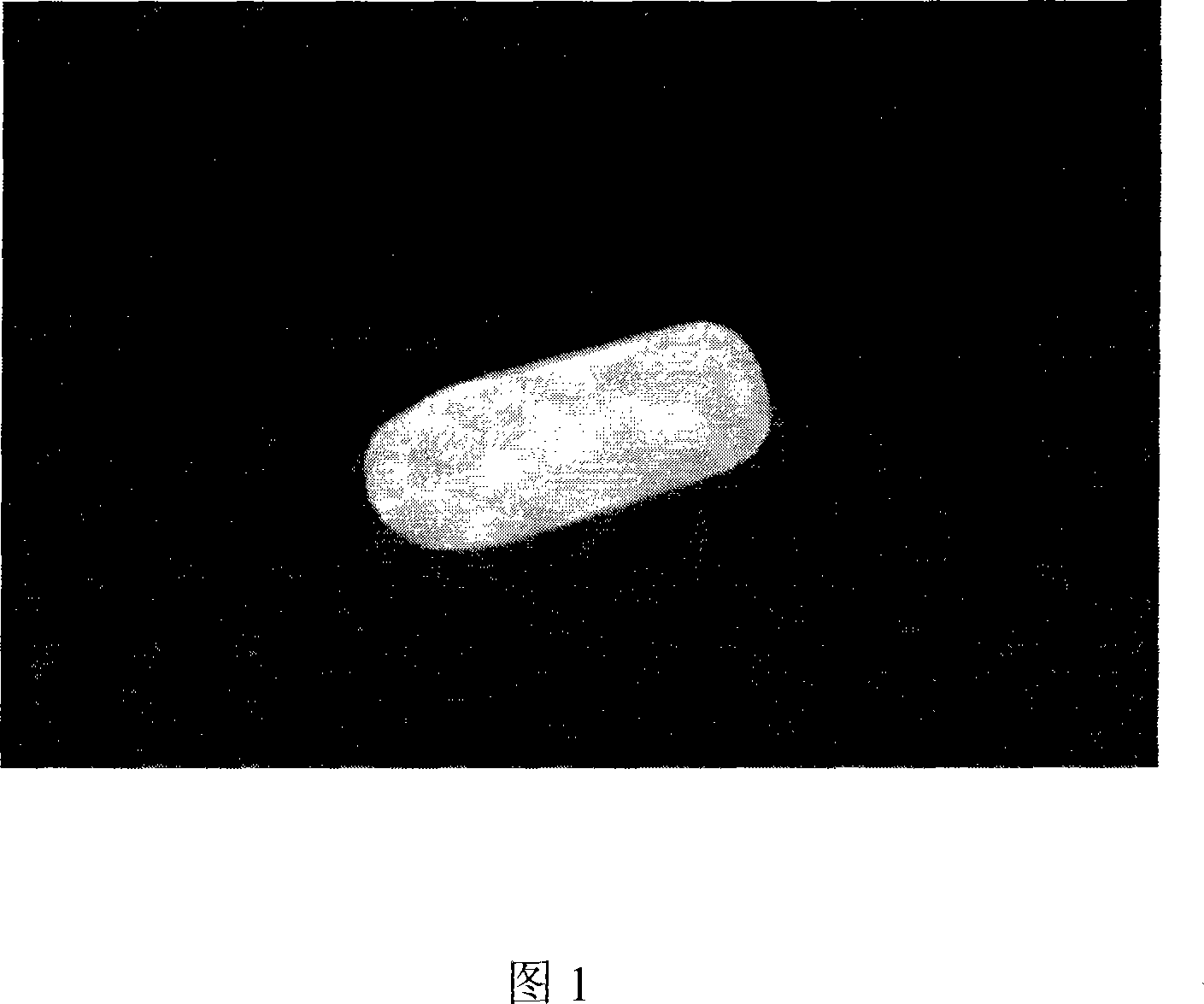Gas production enterobacteria and uses thereof
A technology of Enterobacter aerogenes and short rod, which is applied in the directions of bacteria, process efficiency improvement, fermentation, etc., can solve the problems such as inability to utilize organic matter, no discovery of Enterobacter aerogenes, unfavorable large-scale production and practical application, etc.
- Summary
- Abstract
- Description
- Claims
- Application Information
AI Technical Summary
Problems solved by technology
Method used
Image
Examples
Embodiment 1
[0020] Example 1 strain isolation
[0021] 1) Separation medium: Each liter of separation medium contains 1.0g glucose; 16g ferric citrate; 2.5g NaHCO 3 ;0.25g NH 4 Cl; 0.678g NaH 2 PO 4 2H 2 O; 0.1g KCl; vitamin solution 10.0mL; trace element solution 10.0mL; pH 5.5. Among them, the vitamin solution contains 2.0mg biotin, 2.0mg folic acid, 10.0mg vitamin B6, 5.0mg thiamine, 5.0mg riboflavin, 5.0mg niacin, 5.0mg calcium pantothenate, 0.1mg vitamin B12, 5.0mg p-aminobenzoic acid, 5.0mg lipoic acid; trace element solution contains 1.5g nitrilotriacetic acid, 3.0g MgSO per liter of water 4 ·7H 2 O, 0.5g MnSO 4 ·H 2 O, 1.0gNaCl, 0.1gFeSO 4 ·7H 2 O, 0.1g CoCl 2 ·6H 2 O, 0.1g CaCl 2 , 0.1gZnSO 4 ·7H 2 O, 0.01g CuSO 4 ·5H 2 O, 0.01g AlK(SO 4 ) 2 12H 2 O, 0.01gH 3 BO 3 , 0.01g Na 2 MoO 4 2H 2 O.
[0022] 2) Enrichment: Weigh 5g of ancient forest soil samples and inoculate them into 100mL of the above-mentioned liquid separation medium; fill the culture medium...
Embodiment 2
[0024] Example 2 Characterization
[0025] (1) Morphological characteristics of bacteria
[0026] Observed by a conventional bacterial electron microscope, the strain is short rod-shaped, with a size range of 1.0-1.7×0.6-0.8 μm. (see picture 1)
[0027] (2) Colony Morphological Characteristics
[0028] After 24 hours of aerobic culture on the beef extract peptone solid medium plate, the colony form is round, with neat edges; smooth surface, low convex surface; white, and the colony diameter is 2 ~ 3mm; in the solid separation medium described in Example 1 After 48 hours of anaerobic culture on the plate, the colony is round in shape with neat edges; the surface is smooth and highly convex; yellow, and the diameter of the colony is 2-3 mm.
[0029] (3) Physiological and biochemical characteristics
[0030] According to the BioLog microbial identification instrument, the utilization of 96 different carbon sources by this strain under aerobic conditions can be analyzed, and t...
Embodiment 3
[0037] Example 3 Iron reduction activity
[0038] The electron donor is citric acid and the electron acceptor is ferrihydrite
[0039] Medium (a): Add 2.0g citric acid, 10.0g ferrihydrite, 2.5g NaHCO to 1.0L deionized water 3 , 0.25g NH 4 Cl, 0.678g NaH 2 PO 4 2H 2 O, 0.1g KCl, 10.0mL vitamin solution, 10.0mL trace element solution; wherein, vitamin solution and trace element solution formula are the same as in Example 1; adjust the pH of medium (a) to 5.5, and sterilize at 121°C for 20 Minutes, after cooling, fill with high-purity mixed gas (N 2 / CO 2 =80 / 20) 1 hour. Inoculate the bacteria from the slant of preserved Enterobacter aerogenes XM02 in beef extract peptone liquid medium, activate the bacteria at 30°C, 180 rpm shaker for 9 hours, so that the number of bacteria reaches the exponential growth phase, and inoculate with 10% A small amount of activated bacteria solution was inoculated in the above medium (a), and the anaerobic culture was static at 30°C, and a c...
PUM
| Property | Measurement | Unit |
|---|---|---|
| diameter | aaaaa | aaaaa |
Abstract
Description
Claims
Application Information
 Login to View More
Login to View More - R&D
- Intellectual Property
- Life Sciences
- Materials
- Tech Scout
- Unparalleled Data Quality
- Higher Quality Content
- 60% Fewer Hallucinations
Browse by: Latest US Patents, China's latest patents, Technical Efficacy Thesaurus, Application Domain, Technology Topic, Popular Technical Reports.
© 2025 PatSnap. All rights reserved.Legal|Privacy policy|Modern Slavery Act Transparency Statement|Sitemap|About US| Contact US: help@patsnap.com

